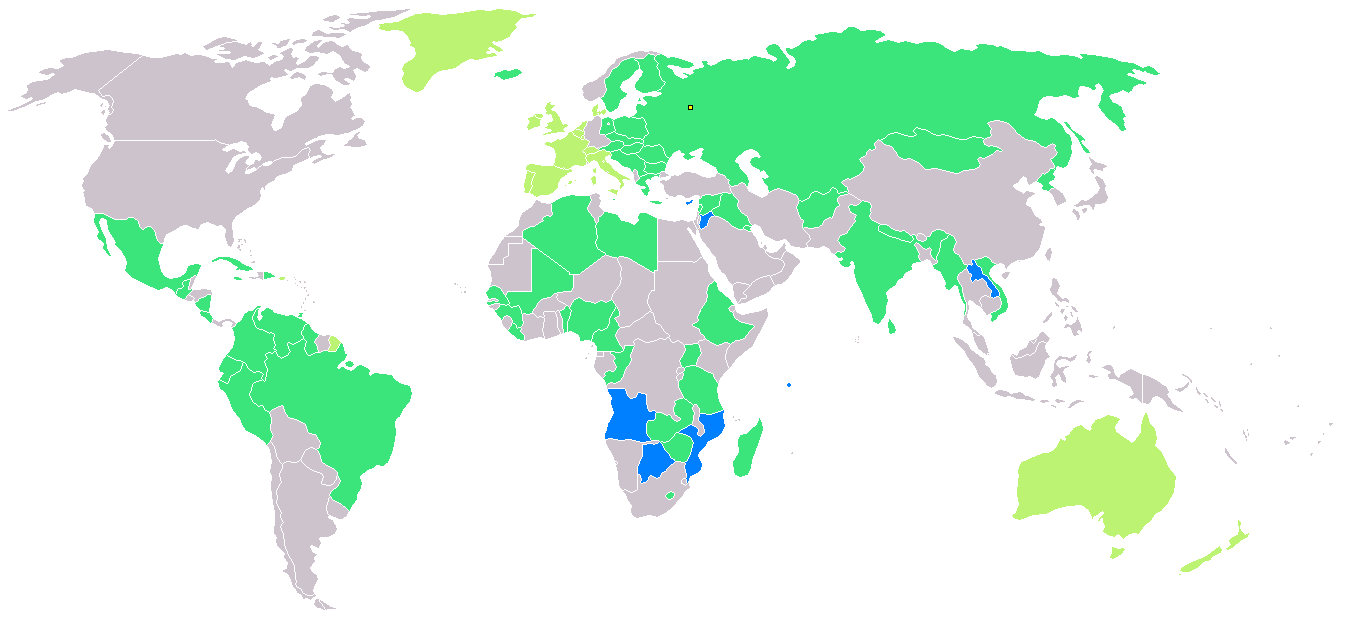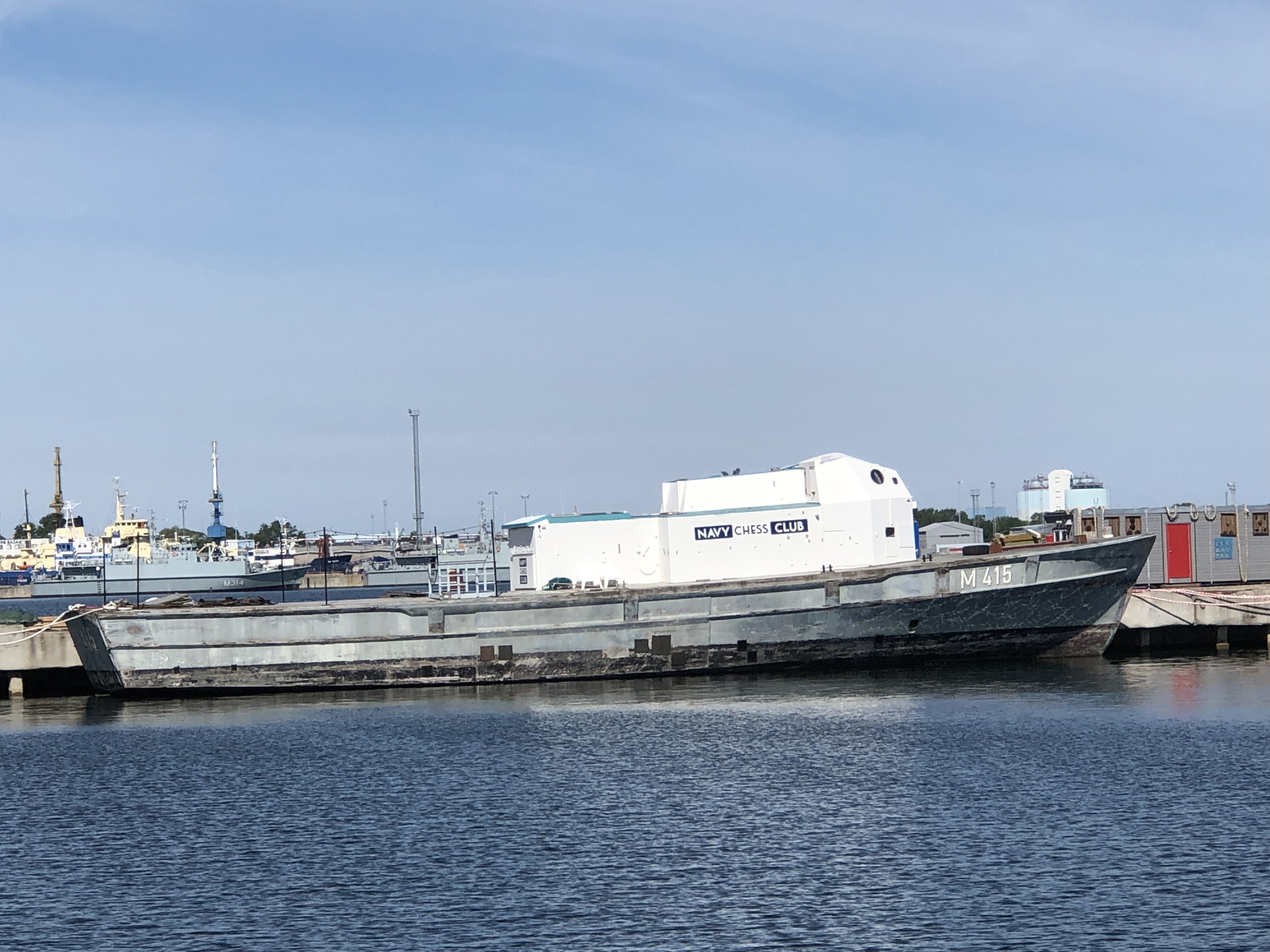|
Estonian Maritime Museum
The Estonian Maritime Museum ( et, Eesti Meremuuseum) is located in the Fat Margaret tower in the old town of Tallinn. The museum presents the history of ships and navigation in Estonia and related to Estonia. Other parts of the Maritime Museum are the mine museum and the Seaplane Harbour museum where ships are presented. The museum claims to be one of the largest museums in Estonia and the most popular. History The Museum was established in February 1935 by former captains and sailors. In November 1940, after the Soviet occupation of Estonia began, the museum was closed and its collection moved to the Kiek in de Kök tower. The original museum building was destroyed in the war. After World War II, the museum's collection was distributed to Tallinn City Museum and other local museums. In 1961, the museum was reestablished. In 1977, as part of a restoration plan of the Old Town in preparation for the upcoming 1980 Olympic Games in Moscow, the museum was again closed and ... [...More Info...] [...Related Items...] OR: [Wikipedia] [Google] [Baidu] |
Tallinn
Tallinn () is the most populous and capital city of Estonia. Situated on a bay in north Estonia, on the shore of the Gulf of Finland of the Baltic Sea, Tallinn has a population of 437,811 (as of 2022) and administratively lies in the Harju '' maakond'' (county). Tallinn is the main financial, industrial, and cultural centre of Estonia. It is located northwest of the country's second largest city Tartu, however only south of Helsinki, Finland, also west of Saint Petersburg, Russia, north of Riga, Latvia, and east of Stockholm, Sweden. From the 13th century until the first half of the 20th century, Tallinn was known in most of the world by variants of its other historical name Reval. Tallinn received Lübeck city rights in 1248,, however the earliest evidence of human population in the area dates back nearly 5,000 years. The medieval indigenous population of what is now Tallinn and northern Estonia was one of the last " pagan" civilisations in Europe to adopt Christianity ... [...More Info...] [...Related Items...] OR: [Wikipedia] [Google] [Baidu] |
1980 Summer Olympics
The 1980 Summer Olympics (russian: Летние Олимпийские игры 1980, Letniye Olimpiyskiye igry 1980), officially known as the Games of the XXII Olympiad (russian: Игры XXII Олимпиады, Igry XXII Olimpiady) and commonly known as Moscow 1980 (russian: link=no, Москва 1980), were an international multi-sport event held from 19 July to 3 August 1980 in Moscow, Soviet Union, in present-day Russia. The games were the first to be staged in an Eastern Bloc country, as well as the first Olympic Games and only Summer Olympics to be held in a Slavic language-speaking country. They were also the only Summer Olympic Games to be held in a self-proclaimed communist country until the 2008 Summer Olympics held in China. These were the final Olympic Games under the IOC Presidency of Michael Morris, 3rd Baron Killanin before he was succeeded by Juan Antonio Samaranch, a Spaniard, shortly afterwards. Eighty nations were represented at the Moscow Games, the ... [...More Info...] [...Related Items...] OR: [Wikipedia] [Google] [Baidu] |
EML Vaindlo (M416)
EML ''Vaindlo'' (M416) was a Frauenlob class minelayer, ''Frauenlob''-class minelayer of the Estonian Navy and belonged into the Estonian Navy Estonian Mineships Division, Mineships Division. Introduction The minelayer ''Vaindlo'' is a vessel of the Estonian Navy Mineships Division and also the second modernized Frauenlob class minelayer. A silver star cross represents the Lighthouse, light tower on the coat of arms of the vessel. The light tower also symbolizes the international connections between Estonia and her allies. The Red Saint George remembers the fallen British sailors in 1721, whose memorial plate is situated at Vaindloo island. The star cross is placed on Vihula´s municipality coat of arms and combined with the golden and silver lines they represent the ancient Estonian agriculture. The ship's motto is in Latin ''"Memento"'' which means in English "Remember". The coat of arms was designed by Priit Herodes. In 2003 a cooperation contract was signed between the Kunda, ... [...More Info...] [...Related Items...] OR: [Wikipedia] [Google] [Baidu] |
EML Olev (M415)
EML ''Olev'' (M415) is a ''Frauenlob''-class minelayer of the Estonian Navy Mineships Division. Introduction The minelayer ''Olev'' is a vessel of the Estonian Navy Mineships Division and also the third modernized Frauenlob class minelayer. In 2003, a cooperation contract was signed between the Paldiski city council and the minelayer ''Olev'' which gave the vessel a right to wear the Paldiski town coat of arms and to introduce the city in all foreign harbors across the world. History The ''Olev'' (M415) was built in West-Germany, in a Krögerwerft shipyard in Rendsburg. The vessel was launched on 13 December 1966, and she entered service a year later on 21 September 1967. The German Navy decommissioned ''Diana'' and two of her twin sisters ''Minerva'' and ''Undine'' in late 1990s and gave the vessels to the Estonian Navy to operate. On the ceremony the vessel received an Estonian name ''Olev''.http://www.mil.ee/?menu=merevagi&sisu=olev ENS Olev (M415) Olev was decommiss ... [...More Info...] [...Related Items...] OR: [Wikipedia] [Google] [Baidu] |
Estonian Navy
The Estonian Navy ( et, Merevägi) are the unified naval forces among the Estonian Defence Forces. With only six commissioned ships and displacement well under 10,000 tonnes, the Estonian navy is one of the smallest navies in the world. Its ship prefix is EML (''Eesti Mereväe Laev''/Estonian Navy Ship). The Estonian Navy has participated numerous times in NATO's naval joint-exercises. History Interwar period Foundation The ''Merevägi'' was founded on November 21, 1918. The foundation and development of the Estonian Navy rely greatly on the Royal Navy which operated in the Gulf of Finland as an ally to Estonia during the Estonian War of Independence. The first Estonian navy warships were the destroyers '' Lennuk'' and '' Wambola'' and were gifts from the UK's Royal Navy after they had been captured from the Russian Baltic Fleet in 1919. Marine Infantry The Meredessantpataljon was a short-lived marine infantry - Naval landing battalion of the Estonian Defence Forces subje ... [...More Info...] [...Related Items...] OR: [Wikipedia] [Google] [Baidu] |
EML Kalev (M414), Ship
Two ships of the Estonian Navy The Estonian Navy ( et, Merevägi) are the unified naval forces among the Estonian Defence Forces. With only six commissioned ships and displacement well under 10,000 tonnes, the Estonian navy is one of the smallest navies in the world. Its sh ... have been named ''Kalev'': * , a launched in 1936 and taken over by the Soviet Union in 1940; she was sunk in the following year * , a previously ''Minerva'' in the German Navy she was acquired by Estonia in 1997 and renamed ''Kalev''. Decommissioned in 2004 and became a museum ship {{DEFAULTSORT:Kalev Ship names ... [...More Info...] [...Related Items...] OR: [Wikipedia] [Google] [Baidu] |
Suur Tõll (icebreaker)
''Suur Tõll'' is an Estonian steam-powered icebreaker preserved in the Estonian Maritime Museum in Tallinn. She was originally built for the Russian Empire in 1914 by AG Vulcan in Stettin, Germany, as ''Tsar Mikhail Feodorovich''. In 1917, she was taken over by the Bolsheviks and renamed ''Volynets''. However, in 1918 she was captured by Finland and served as ''Wäinämöinen'' until 1922, when she was handed over to Estonia according to the Treaty of Tartu and renamed ''Suur Tõll''. When Estonia was occupied by the Soviet Union in 1940, the icebreaker rejoined the Soviet fleet and was again named ''Volynets''. She remained in service until 1985. The Soviet Navy decided to sell the decommissioned icebreaker for scrap, and she was purchased by the Estonian Maritime Museum in 1987. The ship was given back her original Estonian name and was extensively renovated; ''Suur Tõll'', the largest preserved pre-war icebreaker in the world, is currently moored at Lennusadam, ... [...More Info...] [...Related Items...] OR: [Wikipedia] [Google] [Baidu] |
R-class Patrol Boat
The R-class patrol boats was a class of Finnish patrol boats, originally constructed as coastal minesweepers. They were modified into patrol boats by the end of the 1960s and transferred to the Patrol Flotilla and later to the 7th Missile Flotilla. They were then used for sea patrol and as anti-submarine warfare vessels. They were stricken from the Finnish Navy list in the 1990s. The three later vessels, ''Ruissalo'', ''Raisio'' and ''Röyttä'', were somewhat larger and the vessels are therefore sometimes referred to as the ''Rihtniemi'' and ''Ruissalo'' classes. However, the Finnish Navy used the designation R class for all five vessels. The R class was much liked in the Finnish Navy, due to their low fuel consumption and their good seagoing qualities. They were in principle unsinkable (the vessels could have a list of 115 degrees without sinking and still return to upright position). Vessels of the class * ''Rymättylä'' (51) / ''Suurop'' (P 421): Ordered in July 1955 fr ... [...More Info...] [...Related Items...] OR: [Wikipedia] [Google] [Baidu] |
USCGC Bittersweet (WLB-389)
USCGC ''Bittersweet'' (WLB 389) was a ''C'' or ''Iris''-class 180-foot buoy tender of the United States Coast Guard. Built by the Zenith Dredge Company of Duluth, Minnesota, the ship was laid down on 16 September 1943, and launched on 11 November 1943. Commissioned on 11 May 1944, ''Bittersweet'' was assigned to the 17th Coast Guard District, and sailed for Alaska via the St. Lawrence River, the Panama Canal and San Francisco, arriving on 19 November 1944. Based at Kodiak, her primary mission was the performance of general aids to navigation (ATON) duties, but she also carried out numerous search and rescue operations, fought fires, delivered medical supplies, and enforced fishing laws. At the end of the war in September 1945, in addition continuing her ATON duties, ''Bittersweet'' was now charged with the performance of law enforcement duties. Kodiak remained the ship's homeport until 30 June 1964 when it changed to Ketchikan. She remained there until mid-1976 when the ship ... [...More Info...] [...Related Items...] OR: [Wikipedia] [Google] [Baidu] |
Storm-class Patrol Boat
The ''Storm''-class patrol boat was a series of fast patrol boats (FPB) consisting of 20 vessels built for the Royal Norwegian Navy. In Norwegian these boats were called ''missilkanonbåter'' (MKB) meaning boats with missiles and guns. They were operated by the Coastal Combat Flotilla together with the MTBs, or missile torpedo boats. None of the boats are currently in service with the Royal Norwegian Navy. The design was Norwegian and all of the boats were built by Norwegian ship yards from 1965 to 1967. In the 1990s, Norway donated vessels of the class to Estonia, Latvia and Lithuania. Design The ''Storm'' class was designed by Lieutenant-Commander (later Captain) Harald Henriksen. The same man was also involved in the design of the ''Rapp''-class motor torpedo boats - the first Norwegian-built MTBs. Later, he also designed the ''Snøgg''- and ''Hauk''-class MTBs. Henriksen's wife, Margot Henriksen, christened the first KNM ''Skjold'' (P 963), delivered to the Norwegian navy ... [...More Info...] [...Related Items...] OR: [Wikipedia] [Google] [Baidu] |






